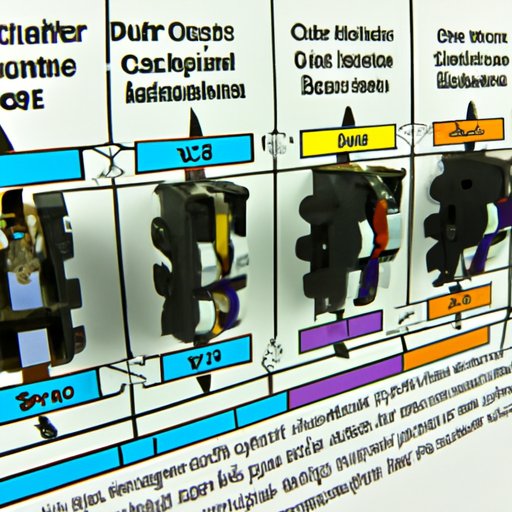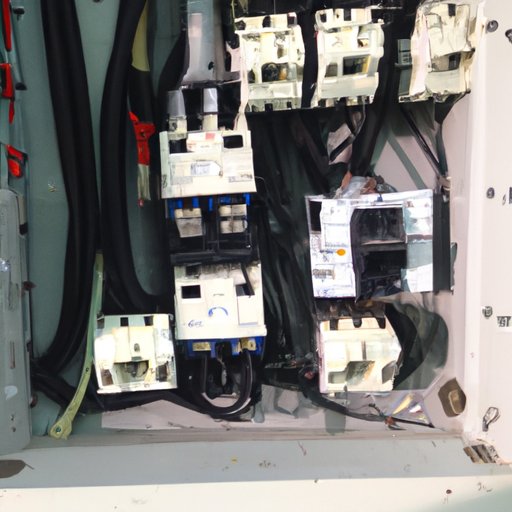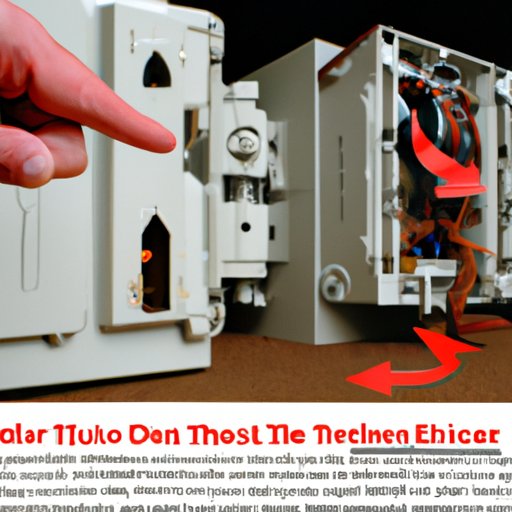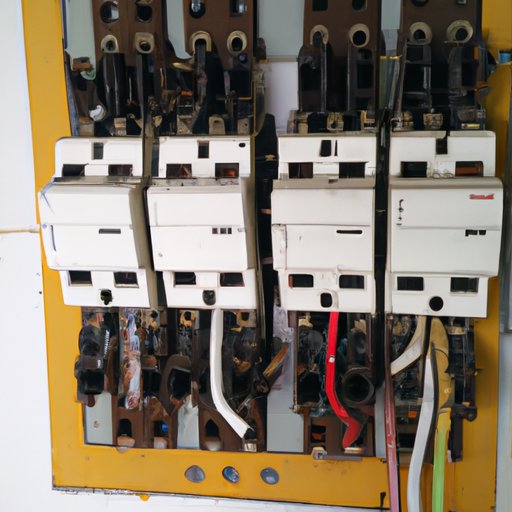Introduction
A tripped circuit breaker is a common problem that many homeowners face. It can be frustrating when all of a sudden, your power goes out, especially during an important task. But why does a circuit breaker keep tripping? To understand this issue better, let’s take a look at the underlying causes and also explore some potential solutions.

Analyzing the Common Causes of Circuit Breaker Tripping
When a circuit breaker trips, it interrupts the electrical flow in a home or building. There are a few main reasons why this happens: overloading, electrical short circuit, ground fault, and loose wiring and connections. Let’s discuss each of these in more detail.
Overloading
The most common culprit behind a tripped circuit breaker is overloading. Overloading happens when too much power is drawn from a single outlet or circuit. This can occur when too many electronics or appliances are plugged into one circuit, or when a large appliance like an air conditioner is running on a circuit that can’t handle the load.
Electrical Short Circuit
An electrical short circuit occurs when a hot wire comes into contact with another wire, appliance, or metal object. This creates a direct current path, which can cause the breaker to trip.
Ground Fault
A ground fault is similar to a short circuit, but it occurs when a hot wire touches the ground instead of another wire, appliance, or metal object. This can also cause the breaker to trip.
Loose Wiring and Connections
Loose wiring and connections can also cause a circuit breaker to trip. If wires become loose or disconnected, they can create a short circuit, causing the breaker to trip. This can happen if wires are not properly connected, if they are damaged, or if they have been chewed on by animals.
Troubleshooting Tips to Stop Your Breaker from Tripping
If your circuit breaker keeps tripping, there are a few steps you can take to try and resolve the problem. Here are some troubleshooting tips to get you started:
Check the Breaker Panel and Wiring
The first step is to check the breaker panel and wiring. Look for signs of damage, such as frayed or broken wires, loose connections, or corrosion. If there are any issues, you should call an electrician to repair them.
Inspect Appliances for Damage
Next, inspect your appliances for any signs of damage. Look for frayed cords, exposed wires, or any other signs of wear and tear. If any of your appliances are damaged, you should replace them or have them repaired.
Replace Outdated Breakers
If your breaker panel is old, it may be time to replace it. Old breakers may not be able to handle the current demand, so replacing them with new ones can help reduce the chance of your breaker tripping.

How Overloading Can Lead to Circuit Breaker Tripping
As we discussed earlier, overloading is one of the most common causes of a tripped circuit breaker. But what exactly is overloading, and how can you prevent it from happening?
What is Overloading?
Overloading occurs when too much power is drawn from a single circuit or outlet. This can happen when too many appliances or electronics are plugged into one outlet, or when a large appliance like an air conditioner is running on a circuit that can’t handle the load.
Signs of an Overloaded Circuit
There are a few signs that can indicate an overloaded circuit. These include flickering lights, buzzing outlets, and warm outlets. If you notice any of these signs, you should unplug some of the appliances or electronics to reduce the load on the circuit.

Understanding the Safety Benefits of a Tripped Circuit Breaker
It’s important to remember that a tripped circuit breaker is a sign that something is wrong. While it can be inconvenient and annoying, it’s a necessary safety feature that can protect your home from electrical fires and other dangers.
Prevents Fire Hazards
A tripped circuit breaker is designed to prevent dangerous electrical fires. If too much power is drawn from a single circuit, it can cause the wires to overheat and start a fire. A tripped breaker will cut the power and prevent a fire from occurring.
Protects Electronics
A tripped circuit breaker can also protect your electronics from damage. Too much power can damage delicate electronics, so a tripped breaker will cut the power before any damage can be done.
Exploring Solutions for Frequent Circuit Breaker Tripping
If your circuit breaker keeps tripping, there are a few solutions you can try. These include increasing the amperage, installing a separate circuit, and upgrading your electrical system.
Increase the Amperage
If your circuit breaker keeps tripping due to overloading, you may need to increase the amperage. You can do this by installing a new circuit breaker with a higher amperage rating. This will allow you to draw more power from the circuit without tripping the breaker.
Install a Separate Circuit
If you have a large appliance that’s drawing too much power, you may want to install a separate circuit for it. This will ensure that the appliance has its own dedicated source of power and won’t affect the rest of the circuits in your home.
Upgrade Your Electrical System
Finally, if you’re constantly having problems with your circuit breaker tripping, you may need to upgrade your entire electrical system. This could involve rewiring your home or installing a new breaker panel. If you think your electrical system needs to be upgraded, you should call an electrician to assess the situation.
Conclusion
A tripped circuit breaker is a common issue that many homeowners face. In this article, we discussed the common causes of circuit breaker tripping, including overloading, electrical short circuit, ground fault, and loose wiring and connections. We also explored some troubleshooting tips and solutions, such as increasing the amperage, installing a separate circuit, and upgrading your electrical system. Finally, we discussed the importance of a tripped circuit breaker, as it can prevent dangerous fire hazards and protect your electronics from damage.
(Note: Is this article not meeting your expectations? Do you have knowledge or insights to share? Unlock new opportunities and expand your reach by joining our authors team. Click Registration to join us and share your expertise with our readers.)
